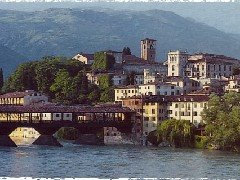 Just as true champagne comes from a specific region of France, and cava is the “champagne” of Spain, Prosecco is a variety of white grape grown around 15 small towns on the hills of Veneto, in the Treviso province (north of Venice) at the feet of the Alps.
Just as true champagne comes from a specific region of France, and cava is the “champagne” of Spain, Prosecco is a variety of white grape grown around 15 small towns on the hills of Veneto, in the Treviso province (north of Venice) at the feet of the Alps.This Italian sparkling wine has long been enjoyed in Europe, and is gaining popularity in North America. My first contact with Prosecco was a few years ago, in Spain, when a German friend brought a couple of bottles along to a beach picnic. She said that it is a staple among her girlfriends, as a prelude to a soiree, or an afternoon delight. (note: Europeans are allowed to enjoy an alcoholic beverage, on the beach, versus the U.S., where, by-and-large, we are not… but that’s fodder for another discussion entirely…)Prosecco has a lower alcohol content than wine, and made in Italy's frizzante style, meaning it's fizzier than beer, though its bubbles are not ‘high-pressure,’ typical of Champagne. Generally, it is light and dry, with harvest-fruit undertones, and tends to be particularly popular among women.Prosecco is a refreshing aperitif, and complements light cuisine such as grilled fish and vegetables, or a thin-crust gourmet pizza. And, as demonstrated in yesterday’s posting on Pinzimini’s signature drinks, it is super to use in sparkling cocktails!Added bonus: Prosecco is priced quite reasonably, and not meant to be aged. So, buy a bottle, gather the gals and find an excuse to celebrate!If you are planning a trip to Italy, tours of the Veneto region are available…
